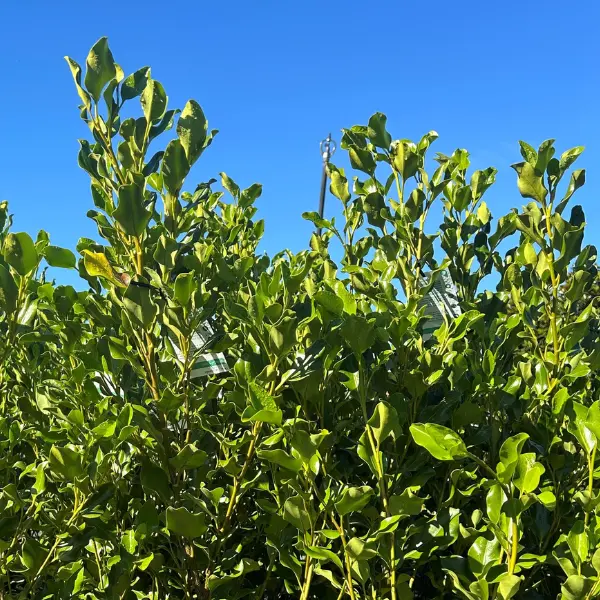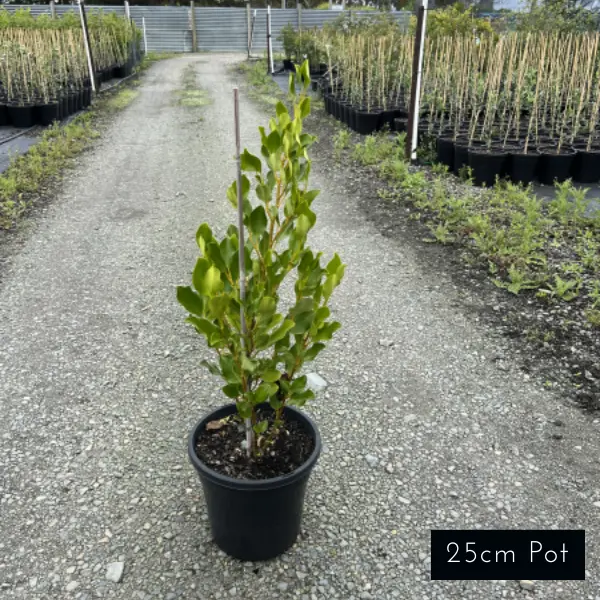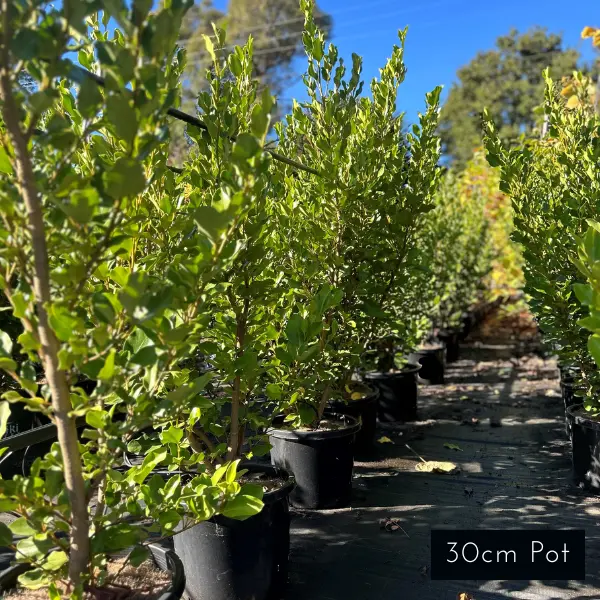Product Specifications
- Common Name: Broadway Mint
- Uses: Screening, hedging narrow garden beds, poolside planting
- Mature Height: 4 meters
- Mature Width: up to 2 meters
- Spacing: 1 meter apart for a screening hedge
- Form: Upright, compact
- Evergreen/Deciduous: Evergreen
- Foliage: Green foliage
- Soil: Most soil types, prefers well draining soil
- Water Requirements: Low – medium
- Native: No
- Position: Full sun, semi shade
- Growth Rate: Medium – fast
- Maintenance: Low – medium, benefits from a light prune
Commonly Asked Questions
How do I care for Broadway Mint?
Choose a location that receives adequate sunlight and has well-draining soil. When planting, ensure proper spacing to allow room for growth and airflow between plants. Water thoroughly after planting to help establish the roots. While Broadway Mint is relatively drought-tolerant once established, it’s essential to water newly planted hedges regularly, especially during dry periods. Once established, water deeply but infrequently, allowing the soil to dry out slightly between waterings.
When should I prune Broadway Mint?
Regular pruning is necessary to maintain the desired height and shape of your screening hedge. Prune lightly throughout the growing season to encourage dense growth and remove any dead or damaged branches. Avoid heavy pruning during hot periods to prevent stress on the plants.
Is Broadway Mint edible?
It’s important to note that the term “mint” in the common name of this plant might be misleading. While it shares a common name with true mints (genus Mentha), such as spearmint and peppermint, it belongs to a different botanical genus (Prostanthera) and is not related to culinary mint plants.





